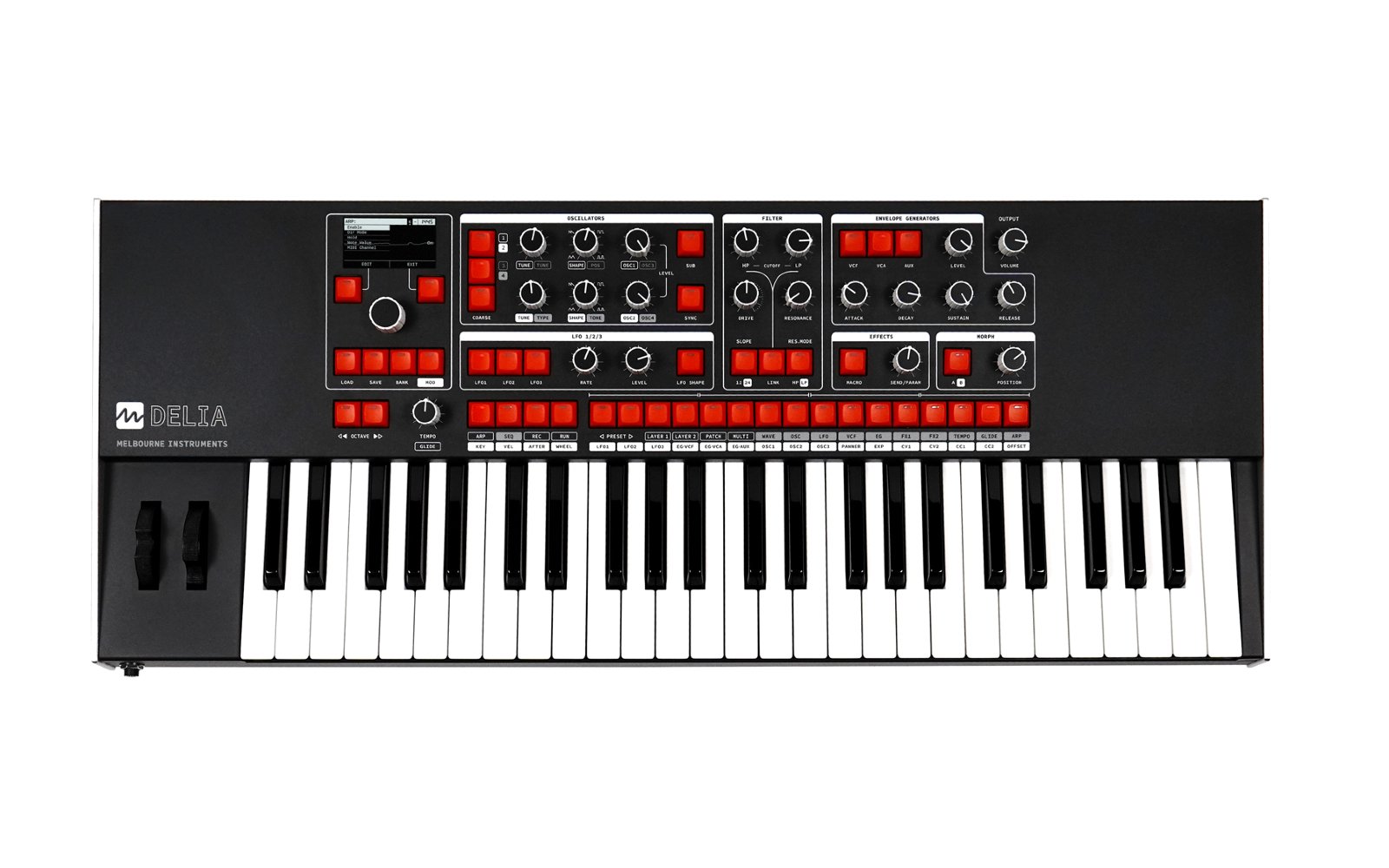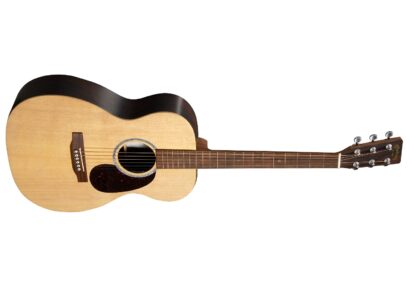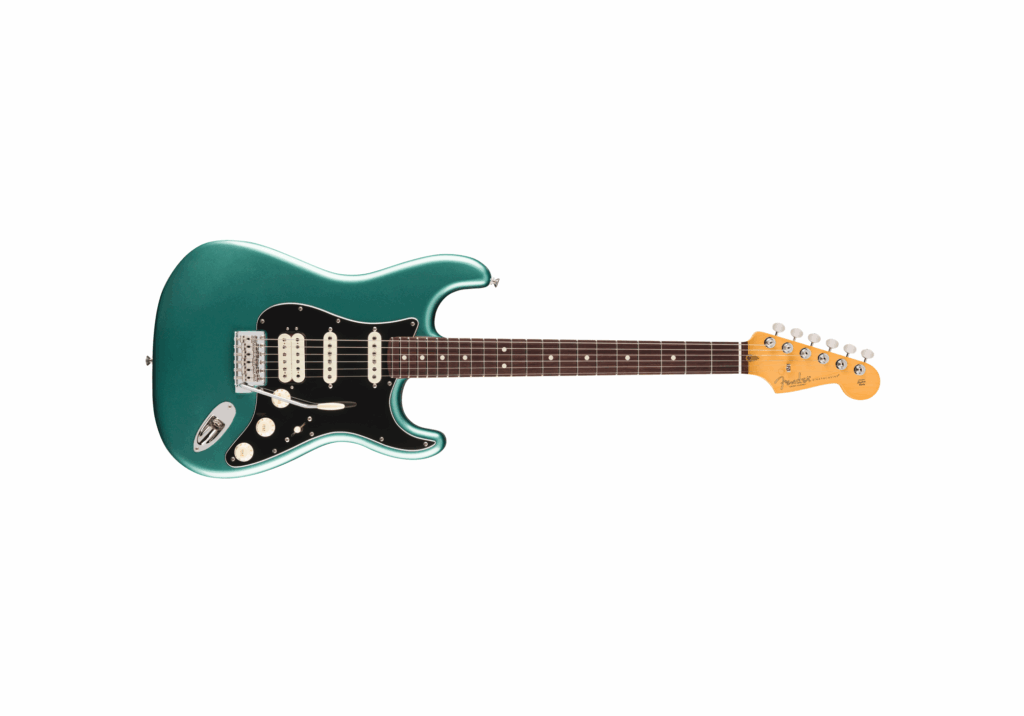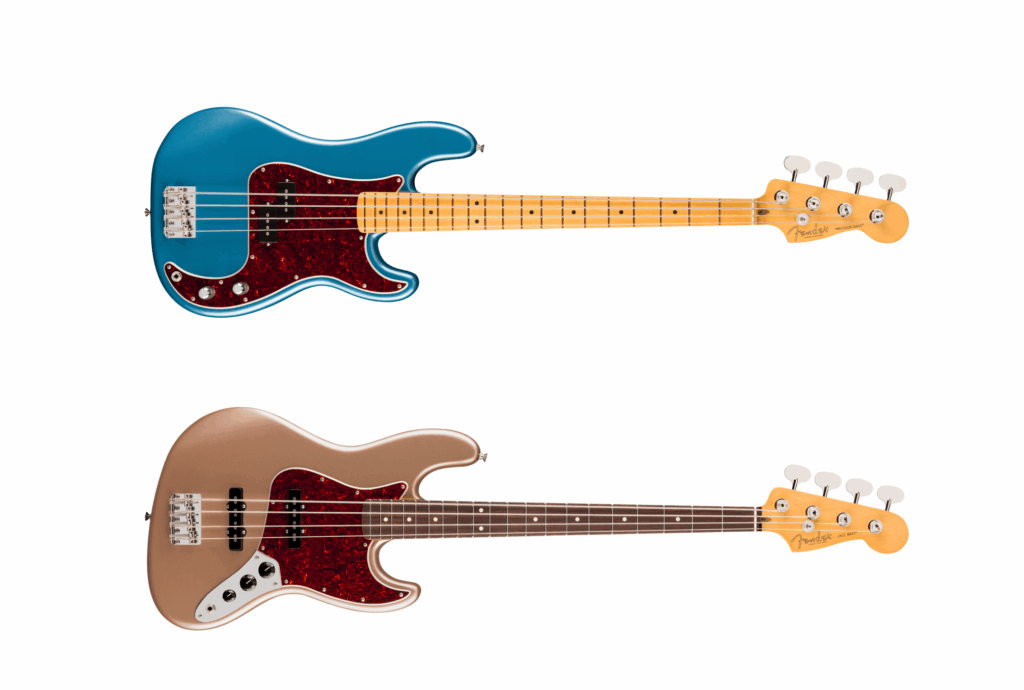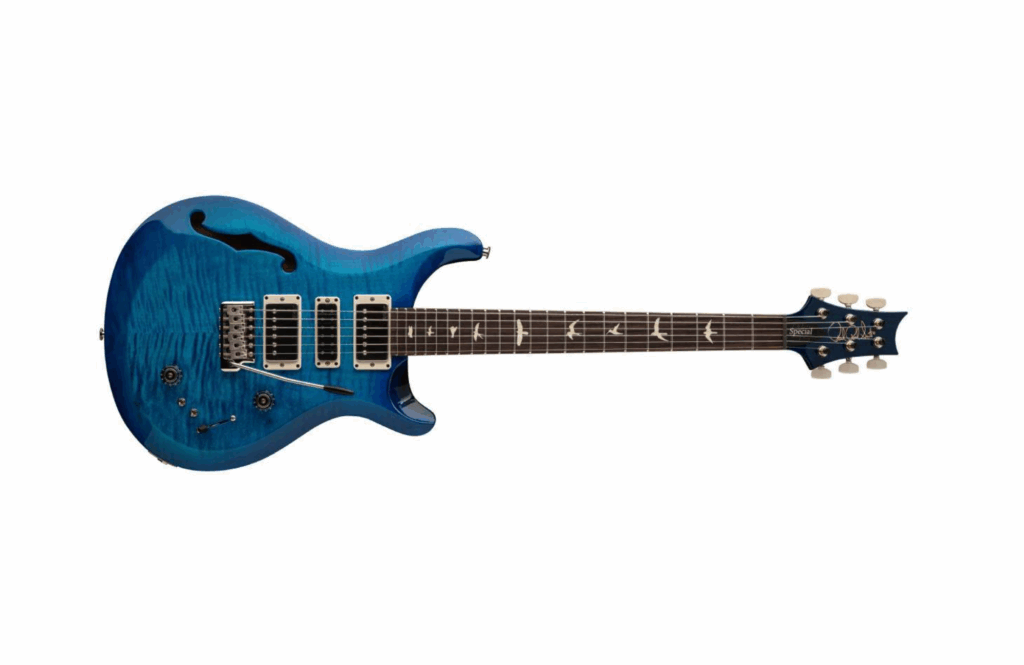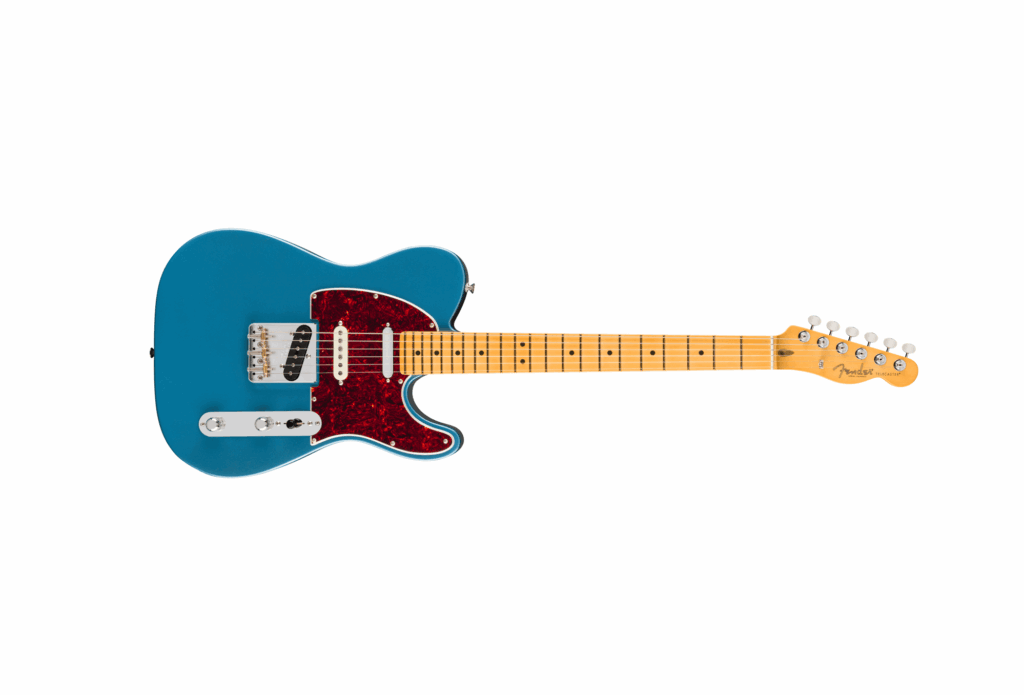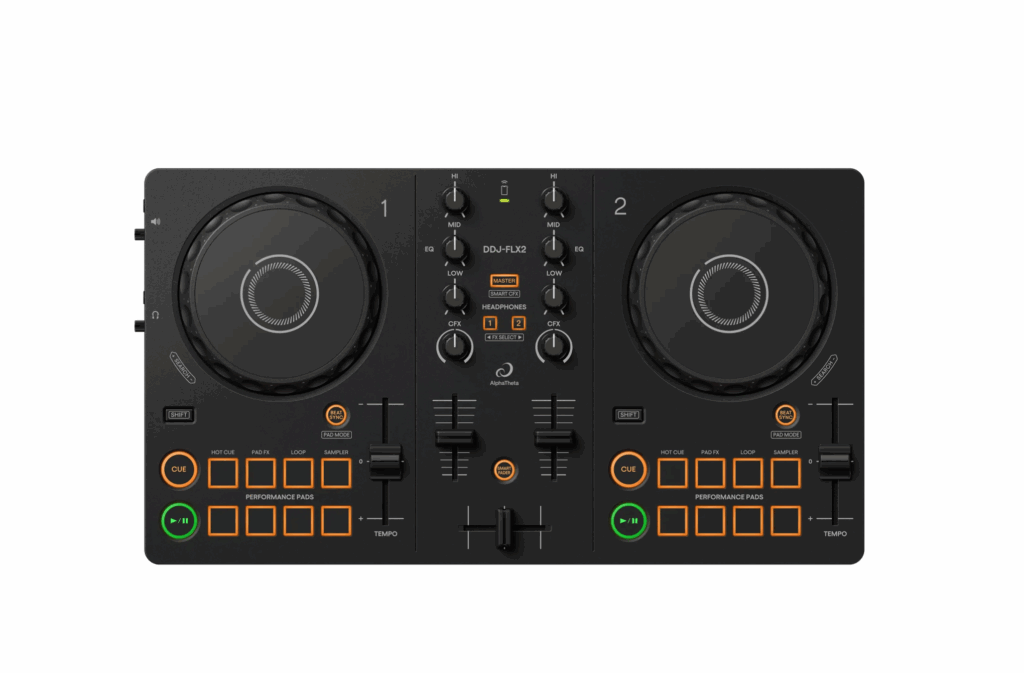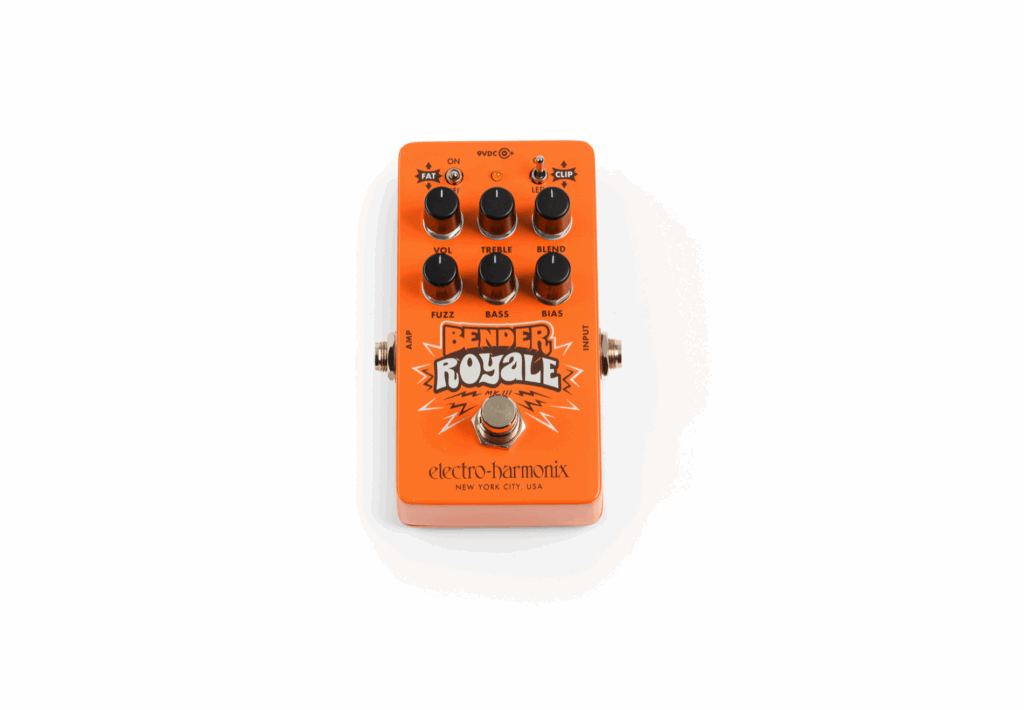DELIA | Melbourne Instruments | RRP: $3895
Having introduced the world to the first motorised analogue synth with NINA back in 2022, it’s incredibly exciting to see the synthesis wizards at Melbourne Instruments introduce a new member to the family.
Springing onto the scene only a couple of years ago, Melbourne Instruments certainly turned heads with their remarkable first foray into the intimidating world of top shelf synthesizers with the introduction of NINA. A bold and far from subtle synth to say the least, I’d never experienced an instrument like this before and needless to say I had a blast with putting it through its paces for review a couple of years back. Thankfully musicians around the world felt the same, facilitating this indie Australian instrument manufacturer the ability to keep the innovations flowing. So seeing the announcement of Delia – a 6 voice motorised morphing polyphonic synth with 49 Key velocity and aftertouch sensitivity – I was itching to see what this synth was all about!
Where Analogue meets Digital
Analogue at heart, DELIA enjoys the benefits and convenience of a digitally controlled front end, but without compromising the irresistible character and flavour overdriven analogue ladder filters bring. Being a six-voice poly synth some may initially gasp, feeling this could limit creativity and playability of DELIA’s 49-key velocity and aftertouch sensitive keyboard (which feels absolutely superb), but thankfully the ingenuity of the Melbourne Instruments team has made a 12-note mode possible through some genius digital and analogue amalgam, which uses 12 oscillator banks splitting them into the 6 filters and stereo VCA’s – which takes care of potential note stealing when in, say, bi-timbral mode. With four oscillators per voice with VA modelled VCO’s, Wavetable, Noise/XOR/Aux options available there’s near endless sonic possibilities here and we haven’t even touched on the filters yet.
Catch up on all the latest music gear reviews here.
Having carefully considered customer feedback, in addition to the gorgeously rich and full sounding true analogue low pass filter, Delia also boasts a compellingly modelled high pass ladder filter. With the ability to link both the HPF and LPF together with the press of a button, the motorised encoders seamlessness sync together for a wealth of bandpass and notch filtering options. Pairing this capability with the separate resonance control of both filters as well as 12 or 24 dB/oct slope options for the LPF (with the HPF being a 24dB/oct model ladder filter which is based on the unequivocal Eber-Moll transistor equations), a near endless array of filter sculpting capability is readily available at one’s fingertips. This ranges from precise bandpass filtering when utilising the link function for creative sweeps using the VCF envelope or other modulation matrix controls through to vocal-like formats for more unique and characterful type tones simply unattainable from other synths. This section of DELIA is practically special and endlessly fun to tweak. Aside from the cutoff, resonance, slope and link control options available in the filter section, the motorised drive control ranges from fully open to completely obliterated for a super aggressive and harmonically rich palette of sound. This is the analogue guts of DELIA and it sounds absolutely monstrous!
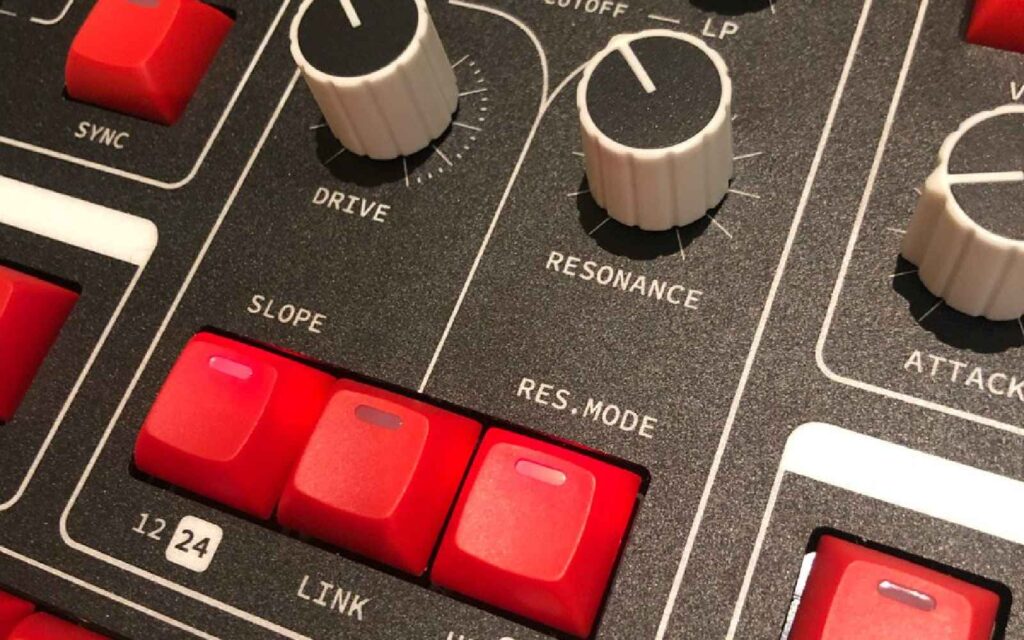
A total of three LFOs are on tap with each having individual control via two motorised encoders and variable shapes ranging from Sine, Triangle, Square, Ramp up, Ramp down, Random are available for some. Three envelope generators including VCF, VCA and AUX can be selected with separate motorised control over level, attack, decay, sustain and release. These parameters can get particularly interesting when morphing between A/B patches.
As for the effects engine, some two processors of alluring stereo digital effects are under the hood including chorus, reverb and delay, with the ability to run in parallel or in series, very nice. With control over send parameters and an additional macro parameter that can assigned to essentially any parameter a user wishes, this just adds to DELIA’s ability to recall essentially anything and everything one needs.
I do, Recall!
Recalling patches and morphing is all too easy but recall expands further again with the genius of MOD MODE, automating the Modulation Matrix setup. With 20 mod sources and 40+ mod destinations, options are near endless for exploration. This seamless workflow is incredibly powerful when creating and exploring the possibilities of what you’re hearing in your head. Feeling like you have the convenience and recall of a virtual synth but the tactility and immediacy of a hardware synth is a unique feeling of synergy on a piece of hardware.
I absolutely loved the morph function on NINA and DELIA’s Morph acts just the same, with seamless transition between patches, being able to explore everything in between too, there really is something about watching all those motorised encoders moving in harmony that just inspires creativity in such a unique way. Having the ability to utilise Morph as a MOD destination opens up some wildly creative options too, further exploring the options of how a patch can be manipulated via the sophisticated Modulation Matrix.
Phase Loop and Sequencer
Sequencing with Delia is quite expansive with two modes of operation. When in Step Sequencer mode and with bi-timbral operation engaged a total of 16 steps can be controlled; pretty deep possibilities here. The phase looper is where DELIA really opens up though, with the ability to loop and layer up to 2000 notes, with no additional time or overdub limits. Much like when in the step sequencer mode, the bi-timbral mode allows for individual control over two layers and adds in the A/B Morphing capability, a total of four timbres are available.
Having taken an enormous amount of inspiration from its older sibling NINA inheriting much of the same under the hood innovative tech such as motorised encoders, an incredible modulation matrix, DELIA genuinely sits in a world of its own with a symbiotic hybrid of digital and analogue technologies making it an electronic musician’s or sound designers paradise. Its intuitive layout was what I had hoped for from this synth and it certainly is a breeze to navigate, edit and just get lost in, which truly opens it up to a wide range of potential users. This synth really just sounds amazing and is a dream to play. Yet another fantastic release from one of the most exciting new names in synthesis.
Keep reading at Melbourne Instruments, or find out more about the DELIA specifically here.
